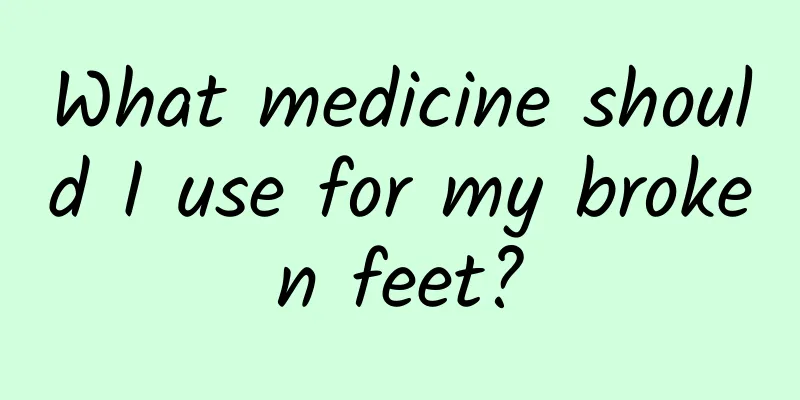Symptoms of oral herpes in adults

|
There are many manifestations of oral herpes, such as oral herpes zoster, oral herpes simplex, etc., which have a great impact on human health. Adults are more likely to suffer from oral herpes simplex, which often causes acute inflammation. It also often causes erosion and skin damage, causing abnormal pain in patients and making them afraid to eat. At this time, timely treatment is necessary. Symptoms of oral herpes in adults 1. Oral herpes simplex (1) Primary herpetic stomatitis It is caused by HSV-I and often manifests as acute herpetic gingivostomatitis. It is more common in children under 6 years old, especially between 6 months and 2 years old. Adults can also get the disease. There are four stages of disease onset: ① Prodromal stage, before the onset of the disease, there is often a history of contact with herpes patients. After an incubation period of 4 to 7 days, acute symptoms appear, such as fever, headache, fatigue, muscle pain all over the body, sore throat, etc., and the submandibular and cervical lymph nodes are swollen and tender. The child drools, refuses to eat, and becomes irritable. After 1 to 2 days, the oral mucosa, attached gingiva and marginal gingiva become extensively congested and edematous. ② During the blister stage, the oral mucosa presents clusters of small blisters, the size of a needle tip, with thin, transparent walls that are easily ruptured, forming superficial ulcers. ③ During the erosion stage, clusters of small blisters may rupture and cause large-area erosion, and may also cause secondary infection. Covered with yellow pseudomembrane. Similar lesions may also occur on the lips and skin around the mouth, with blisters breaking and forming scabs. ④ During the healing period, the erosion surface gradually shrinks and heals. The whole course of the disease takes 7 to 10 days. (2) Recurrent herpetic stomatitis After the primary herpes infection heals, recurrent lesions occur, and the site of recurrent infection is near the lips, which is also called recurrent herpes labialis. Its clinical manifestations are: the lesions always begin with multiple clustered blisters. When the lesion recurs, it is always at or near the location of the original attack. There are prodromal symptoms, and the patient may feel mild fatigue and discomfort, and soon there will be itching, increased tension, burning pain, tingling and other symptoms in the area where the recurrent damage is about to occur. Within a few hours, blisters appear, surrounded by mild erythema. Generally, blisters can last less than 24 hours, followed by rupture, erosion, and scab formation. The course of the disease is about 10 days, but secondary infection often delays healing. No scars are left after healing, but pigmentation may be present. Factors that induce recurrence include local mechanical stimulation, colds, sunlight exposure, etc. Emotional factors can also induce recurrence. Although recurrent herpes labialis is the most common form of recurrence of the disease, a small number of recurrences can damage the gums and hard palate. 2. Oral herpes zoster Oral mucosal lesions: They are prone to occur in the distribution area of the trigeminal nerve. The blisters are short-lived and often manifest as shallow ulcers with irregular edges and covered with yellow pseudomembranes. They are limited to one side and cause severe toothache. The area where the rash is about to break out will first feel pain, itching, and burning, followed by flushing, and clusters of millet-sized papules will appear. They are arranged in bands along the affected nerves and quickly turn into blisters. The blisters can merge into large bullae. The blister walls are tense and the contents are clear and transparent, gradually becoming turbid and even bloody and purulent. After a few days, the blisters are absorbed and dried up, and the scabs fall off after 1 to 2 weeks, leaving temporary erythema or pigmentation. Generally no scars are left and the damage does not exceed the midline. |
<<: What are the symptoms of approaching menopause?
>>: What are the symptoms on the face if the lungs are not good?
Recommend
What parts of hairy crabs can't be eaten?
I believe many people have heard that the tips of...
What is the difference between vaginal ultrasound and hysteroscopy?
Vaginal ultrasound and hysteroscopy are both very...
Can I touch my belly during early pregnancy?
Finding out that you are pregnant is something th...
Why are my hands and feet weak?
As we all know, if you overwork, such as after a ...
Who are the consumers of Cordyceps sinensis?
Cordyceps sinensis is a very precious Chinese med...
What foods are good for cerebral infarction and what foods are beneficial to health?
The magic of traditional Chinese medicine lies in...
How to treat high uric acid?
I often hear some friends say that they had a phy...
What causes red and swollen gums?
Our oral cavity needs our special attention, but ...
Is coffee enema good?
People who hear this term for the first time may ...
Tips for self-extraction of teeth
For some reason, teeth may become loose. If they ...
Acute bronchitis
Acute bronchitis is divided into three types: the...
How to treat pharyngitis
Pharyngitis is a relatively common disease. After...
What to do if you have saliva in your mouth?
Drooling is a very familiar symptom for many peop...
What causes moles and warts
Generally, babies have fair and tender skin when ...
What is the reason for the growth of buds between the anus and the vagina?
If you find granulation tissue growing between th...









